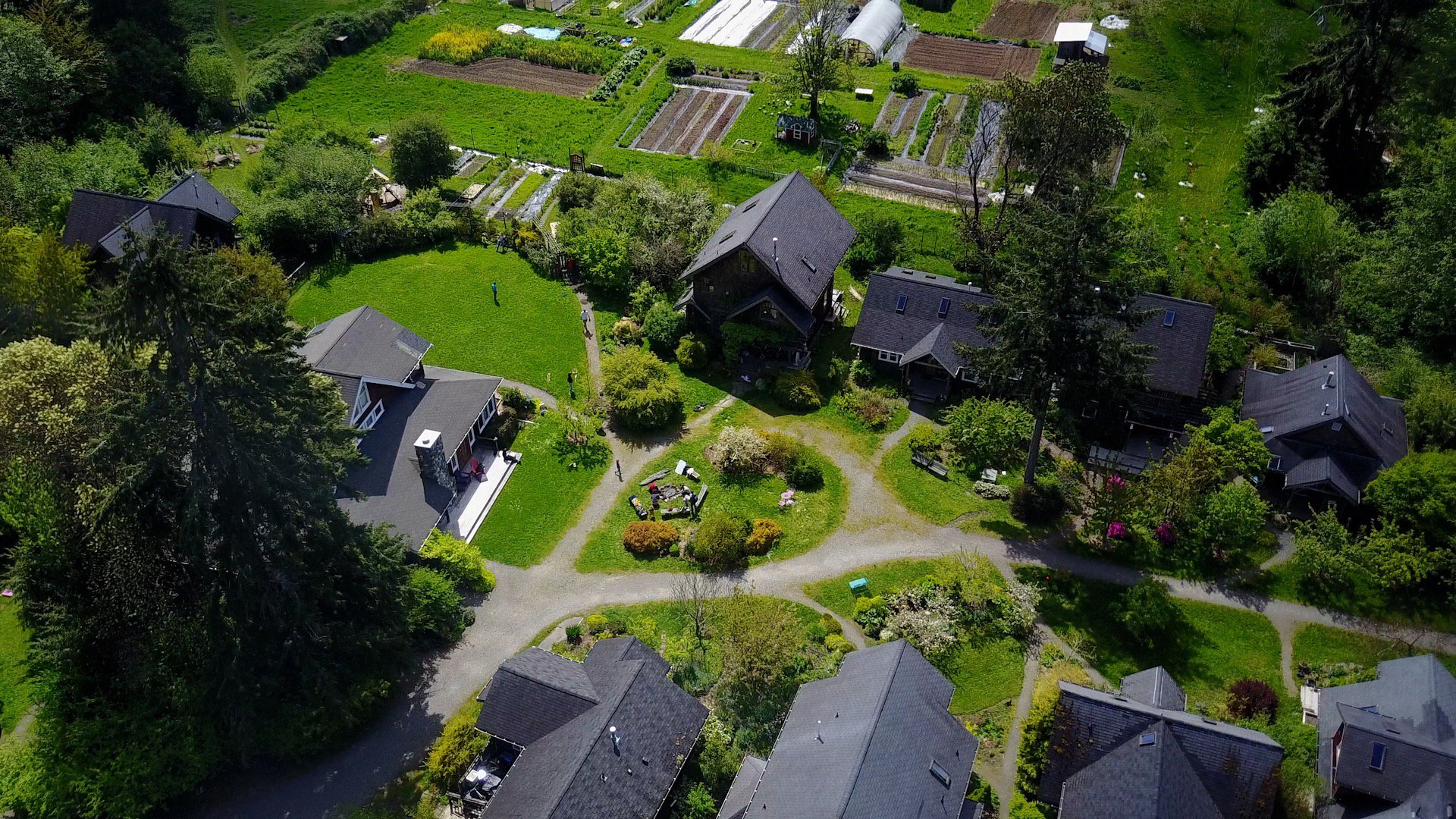Eighteen households make up Vashon Cohousing. We have a mature and bountiful orchard. Our common house – with three guestrooms, a large dining room and a full commercial kitchen – is a place where we host friends and families, hold parties, share meals and gather for meetings. More than eight acres of natural areas – rich in bird life – surround our homes.
Working together keeps our community beautiful! Each household works about 10 hours each month to support and maintain our neighborhood. Filling potholes, shoveling compost, mowing grass, answering email inquiries, creating meeting agendas, planting potatoes, and so much more!
Cider pressings. Potlucks. Bonfires. Work Parties. Bird walks. Regular meetings and gatherings. We find ways to create community, engage children and enjoy each other’s company.
